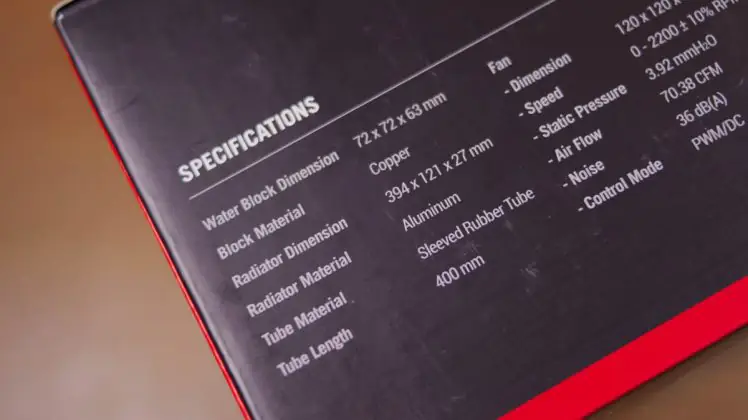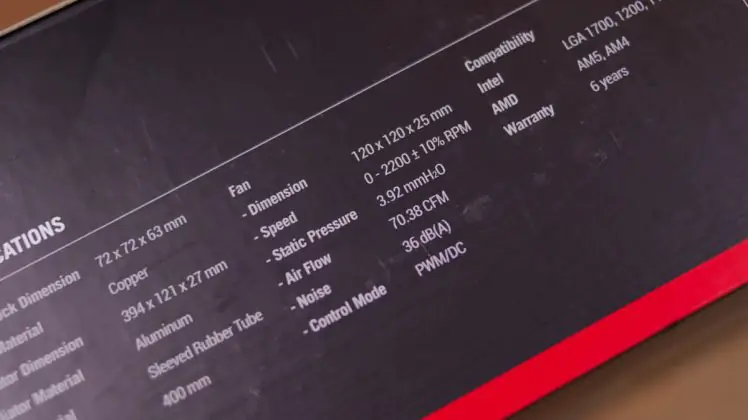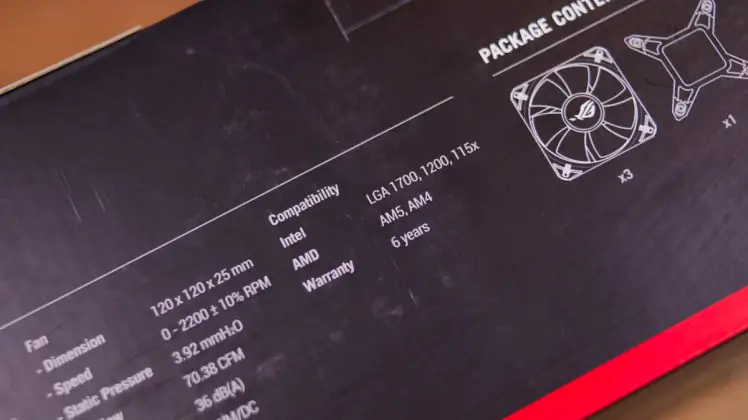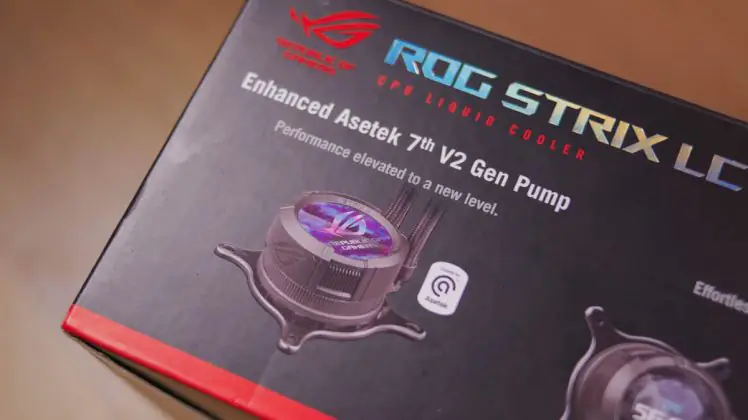© ROOT-NATION.com - Use of content is permitted with a backlink.
No matter how much I adore the ProArt series, ASUS ROG liquid cooling has its own unique charm. It’s “gamer squared,” focused, bright, directed, and unapologetic. Yes, the ASUS ROG Strix LC III 360 ARGB LCD is not a cheap system—not even close—but it certainly has its reasons to justify its price.
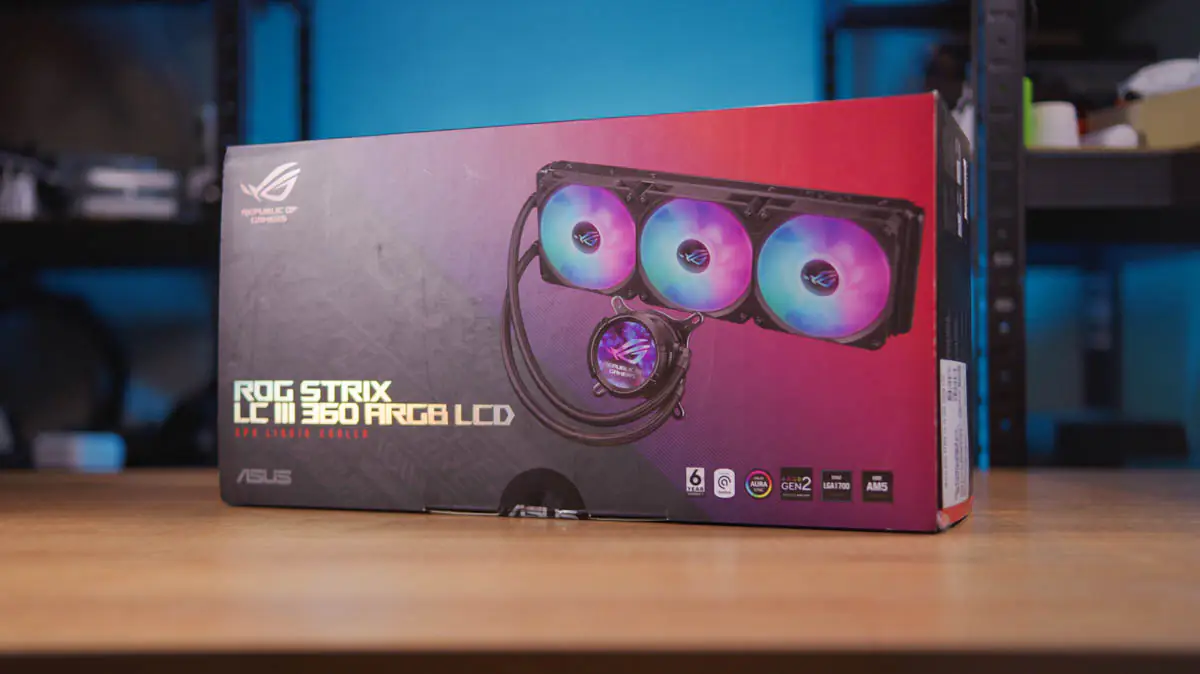
Market positioning and price
Let’s start with the price. Right off the bat, there’s a problem: this model was sold out everywhere at the time of writing this review. However, I can give you an approximate price, which is about $325.
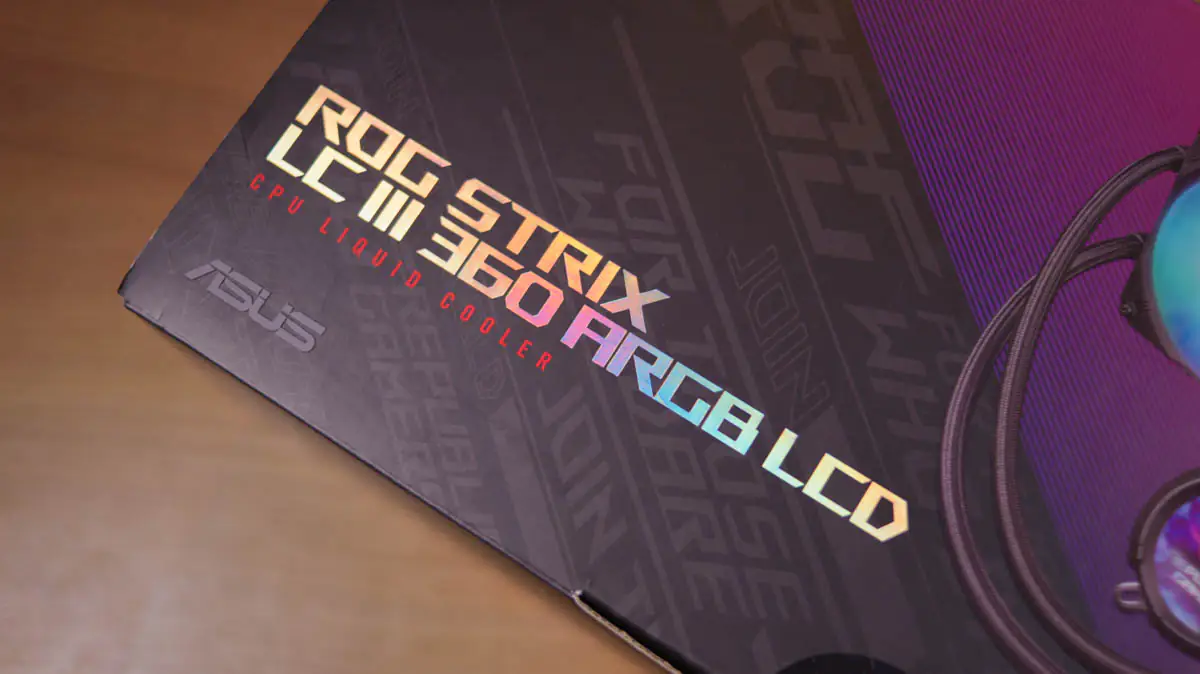
Package contents
The packaging is standard – except, perhaps, for the ASUS club card.

Overall, the ROG Strix LC III 360 ARGB LCD package includes a radiator with a pump, three ASUS ROG STRIX AF-12S ARGB fans, as well as a set of mounting brackets for LGA 1700, LGA 1200, LGA 115x, AMD AM4, and AMD AM5. Additionally, you’ll find fan screws, a user manual, stickers, and two splitter cables with three connectors—for 3-pin fans and 3-pin ARGB.
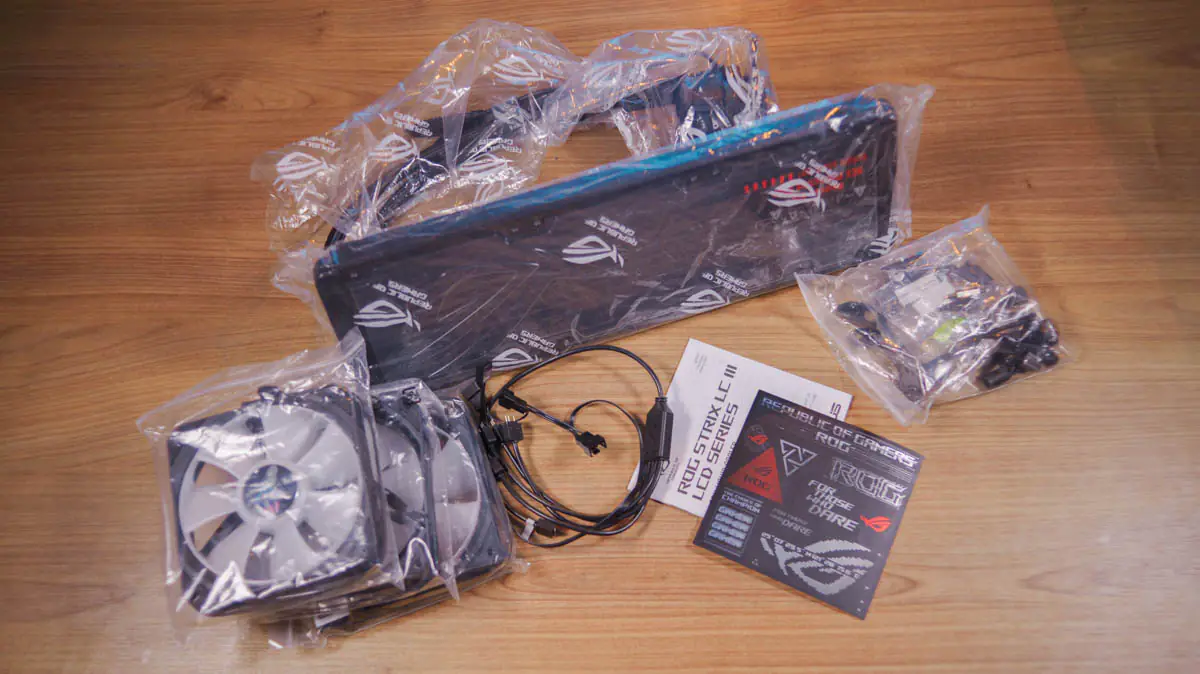
External appearance
The system itself looks quite standard—a radiator, pump, and two tubes. However, upon closer inspection, you can find some interesting details.
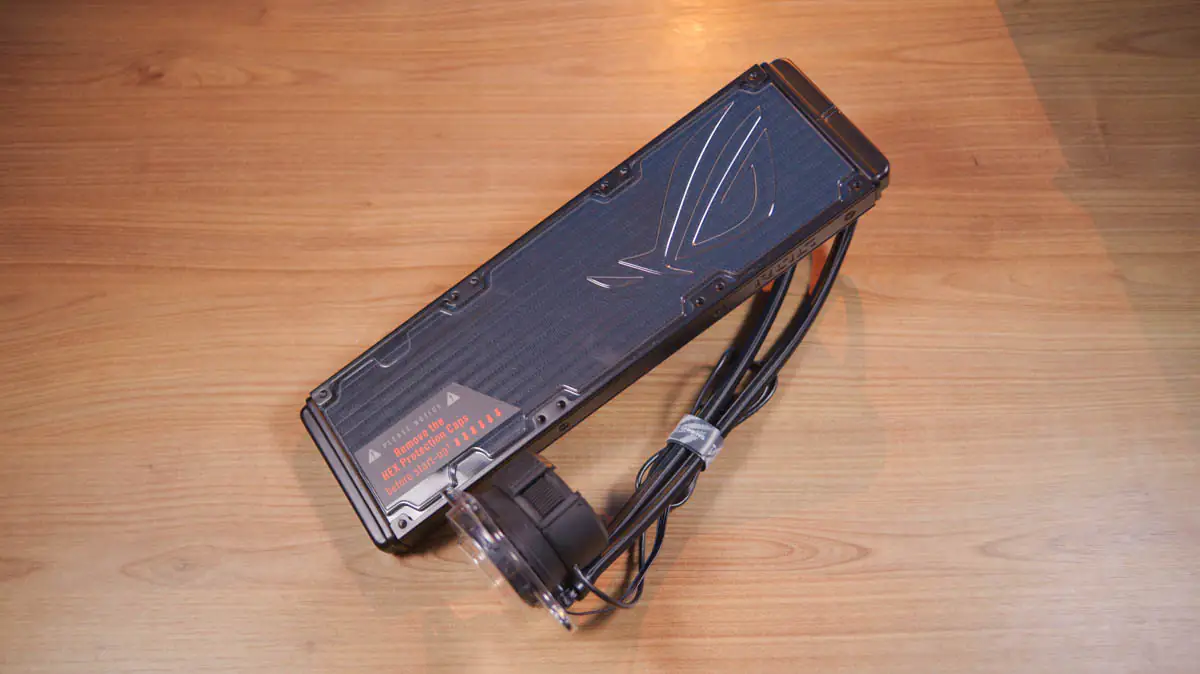
Such as the power and lighting cables of the pump neatly tied together with a branded Velcro strap, or the embossed design on the edge of the radiator.
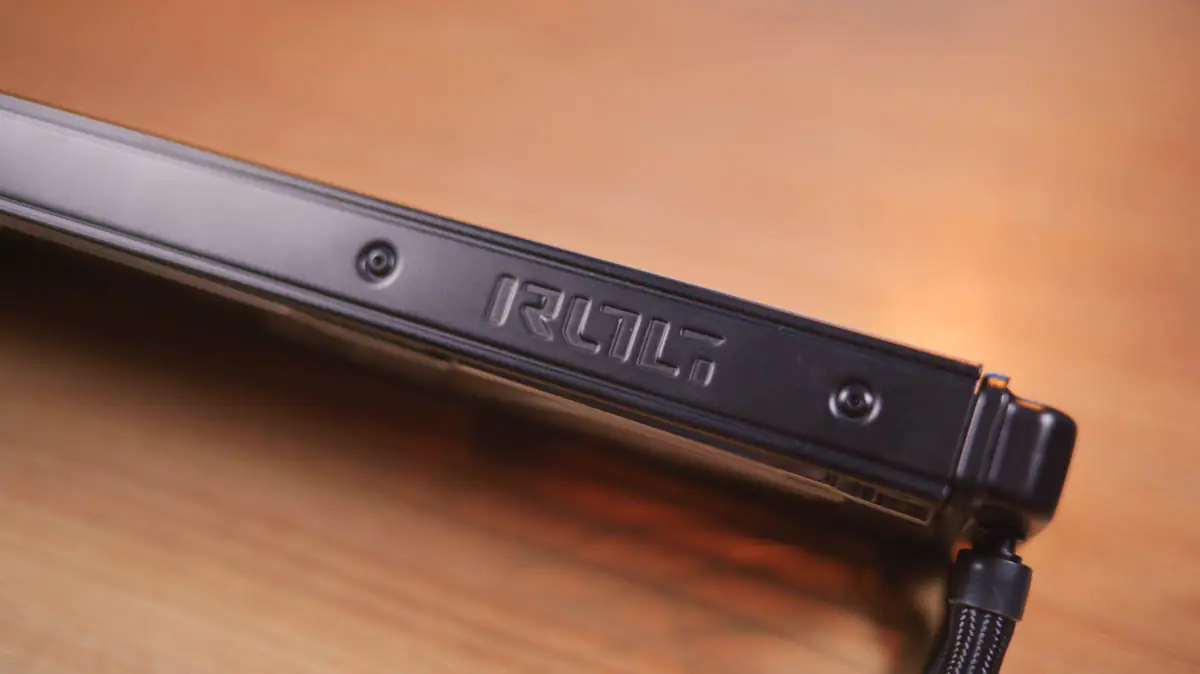
The radiator itself measures 360 mm and has a thickness of 27 mm, with two 12 mm rubber tubes running from it to the pump. These tubes are reinforced with nylon braiding and securely clamped on both ends.

The pump consists of two parts: the pump itself and a magnetic display module. The latter is the reason for the higher price, as its predecessor, the ROG Strix LC II 360 ARGB, was offered without a screen.
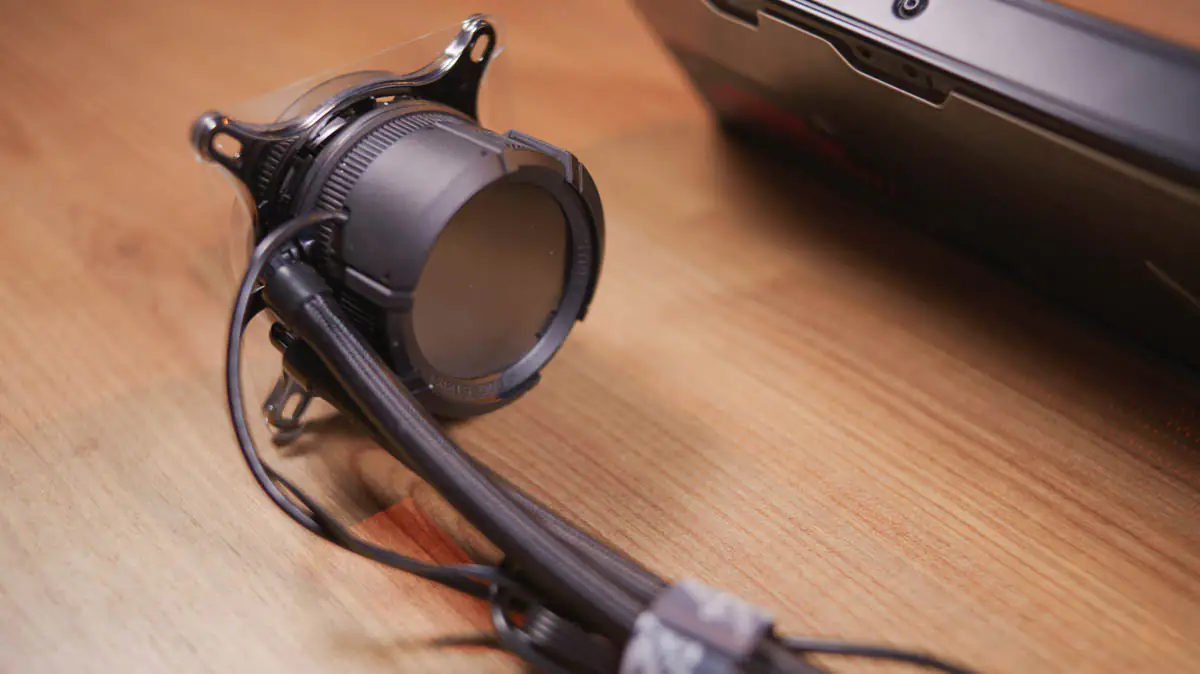
The display can be removed when needed, but rotating it left or right can be somewhat hindered by the mounting design. However, you’ll soon see why this isn’t actually a significant issue, but it’s good to be aware of.
Read also: ASUS ProArt PC Review
The contact area between the pump and the processor features a 54 mm copper plate. From the factory, it comes pre-applied with thermal paste and covered with a plastic cap. However, my sample had been with several reviewers before me, so I won’t be able to demonstrate the application of thermal paste.
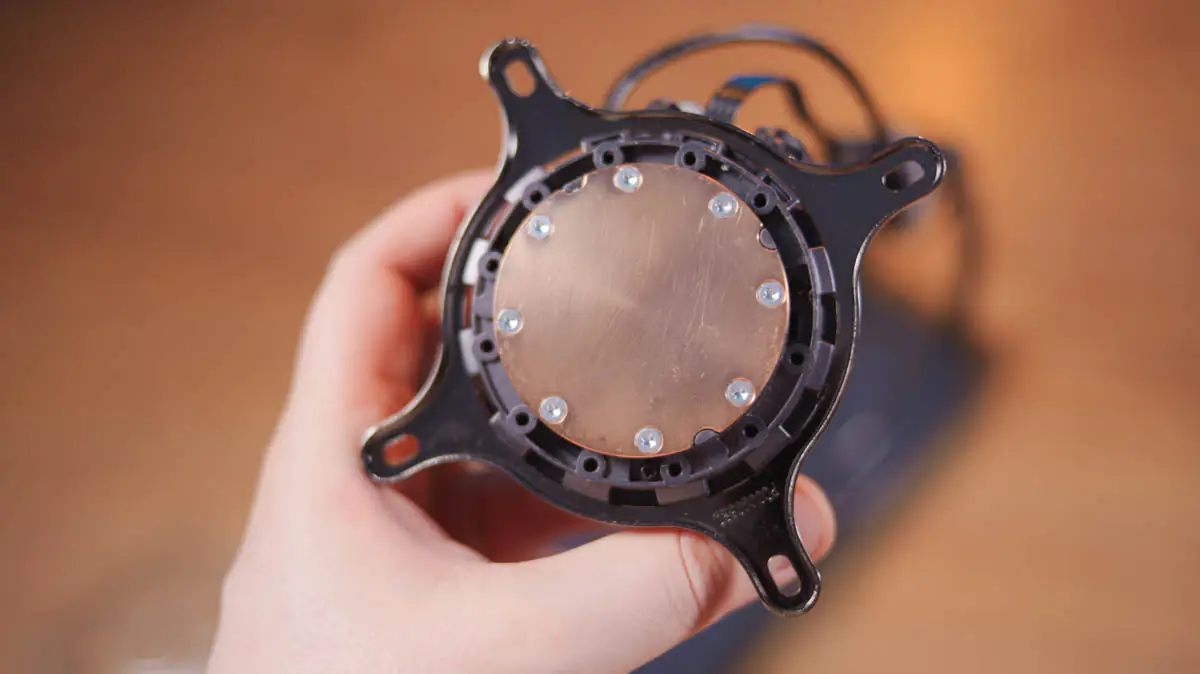
The radiator is also covered with protective transparent plastic shields by default. These can be removed by pressing with your fingers in the area near the warning label, where the indentations are more noticeable.
Specifications
The dimensions of the radiator are 394×121×27 mm, and the length of the tubes is 400 mm each. The height of the water block is 63 mm, but without the screen module, it nearly halves. The total weight of the system with fans and screws is just over 2 kg. The pump is the Asetek 7 V2, essentially the best on the market in terms of both efficiency and noise levels.
The display on the pump has a diagonal of 2.1 inches and uses IPS technology. While the screen isn’t as vibrant as an OLED, it’s a plus that it won’t flicker on camera like almost all OLED displays of this type do.
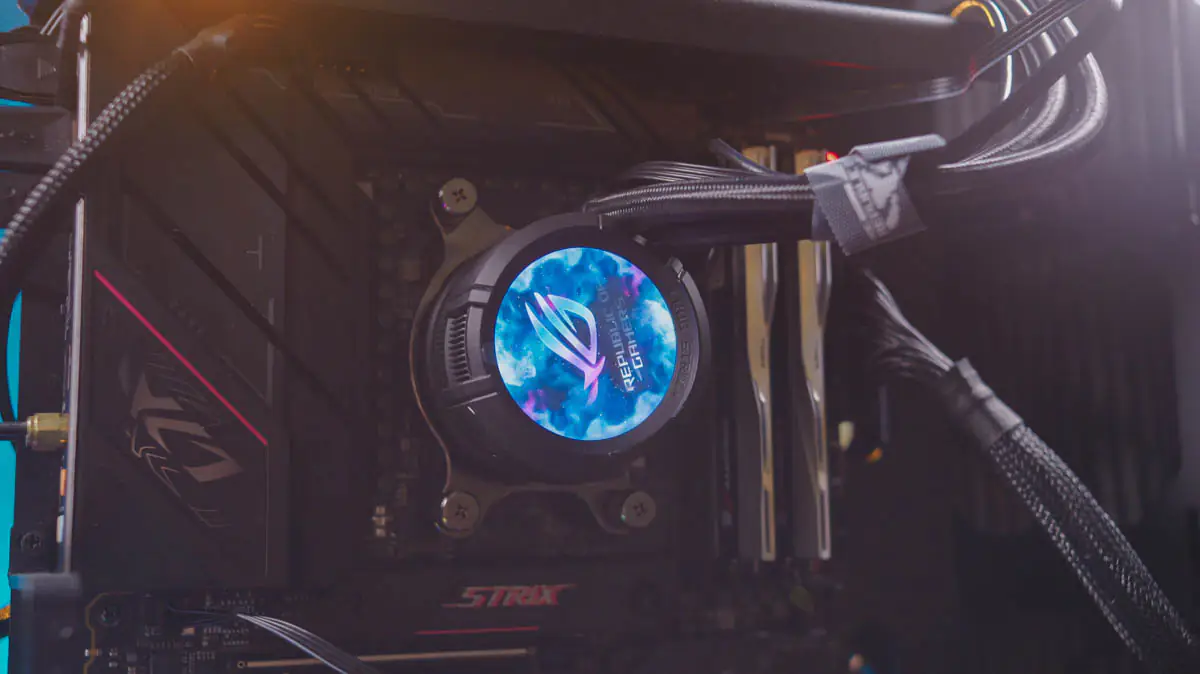
This means that filming setups with such a display for social media will look stunning from any angle.
Installation scheme
Since I tested the ASUS ROG Strix LC III 360 ARGB LCD on an AM5 system, the mounting scheme turned out to be slightly complicated. Specifically, the base for securing the pump needs to be removed because it is designed for the LGA 1700 standard.
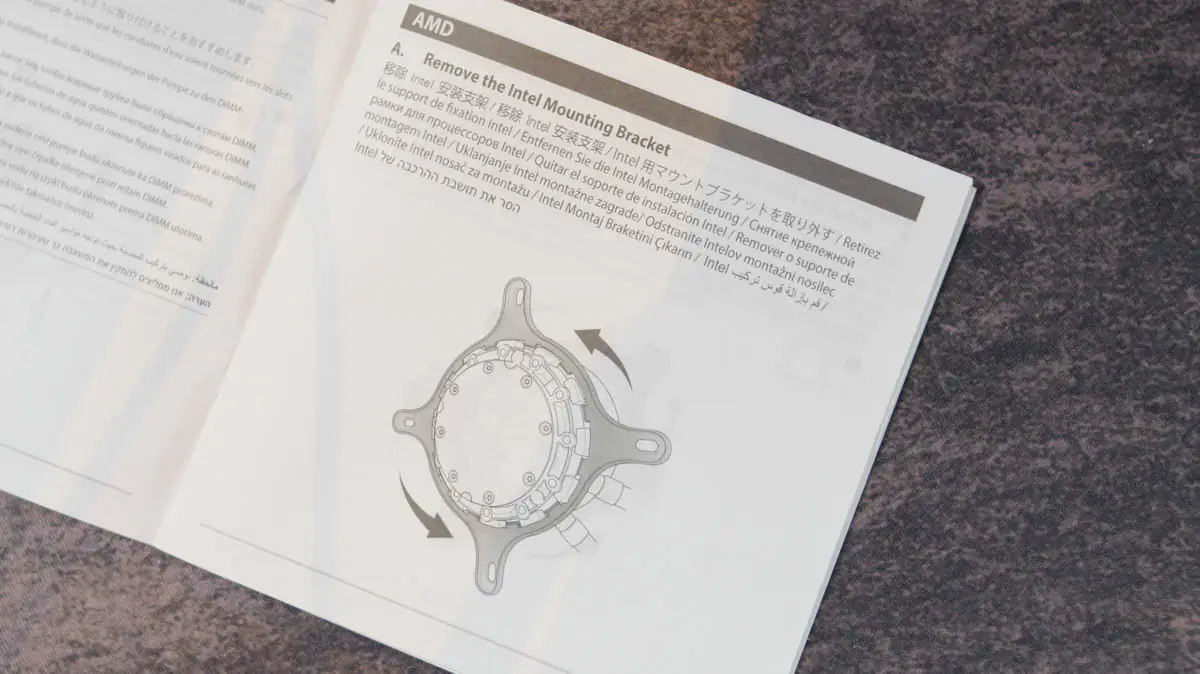
I positively note the clever mounting for AMD—while the AM4 setup is different for AM5, it mainly involves inverted plastic spacers. That’s all. However, I should mention that a 4-pin cable and a USB 2.0 system cable are used to connect the pump.
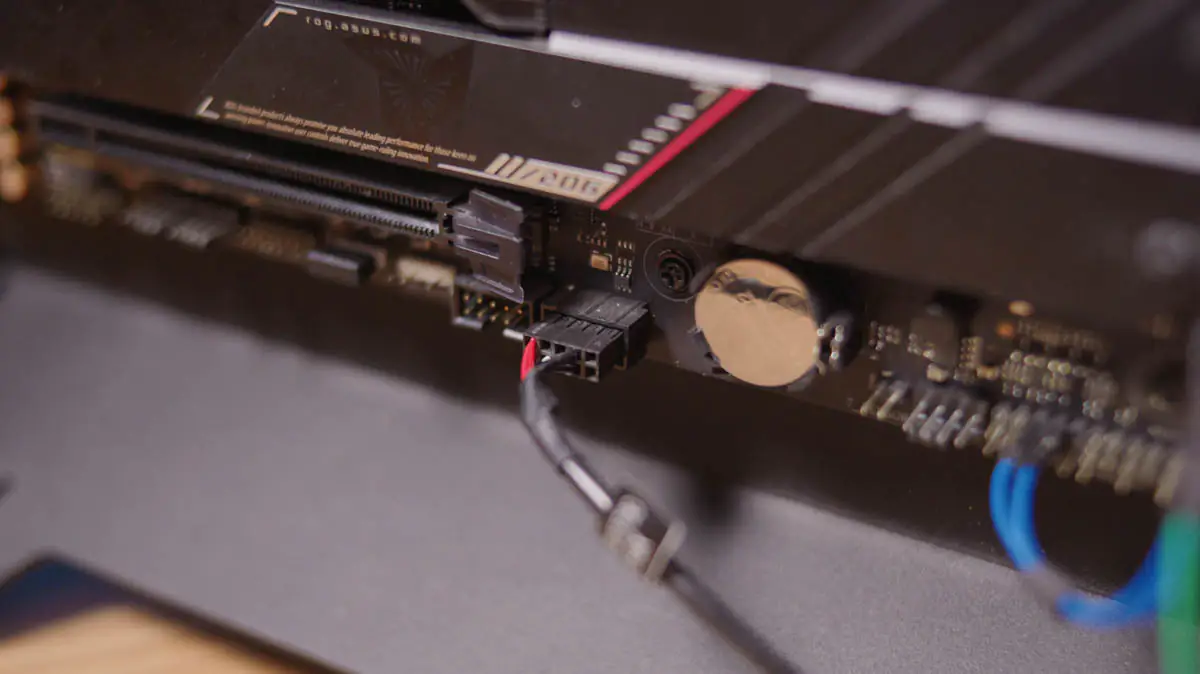
The last part is unusual because synchronization typically uses a 3-pin ARGB, while power comes from SATAIII. However, this means that there’s extra space on the ARGB splitter—for instance, for adding case lighting in the Gorilla Custom X.
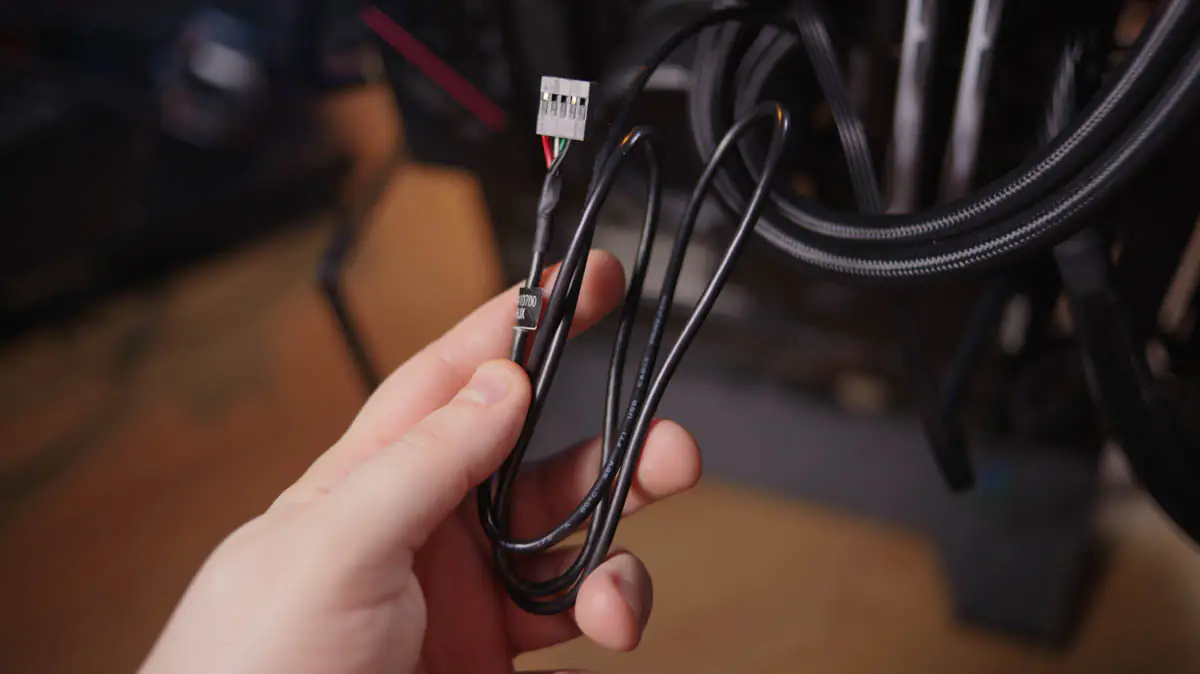
The ROG STRIX AF-12S ARGB fans operate at speeds ranging from 800 to 2200 RPM. They provide a static pressure of 4.18 mm and an airflow of nearly 120 m³/h, with a claimed noise level of up to 36 dBA. The liquid cooling system comes with a 6-year warranty.
Software and backlighting
After installation, the display on the ROG Strix LC III 360 ARGB LCD is initially rotated at an incorrect angle. However, this is normal, as it can be easily corrected using the ASUS Armory Crate software.
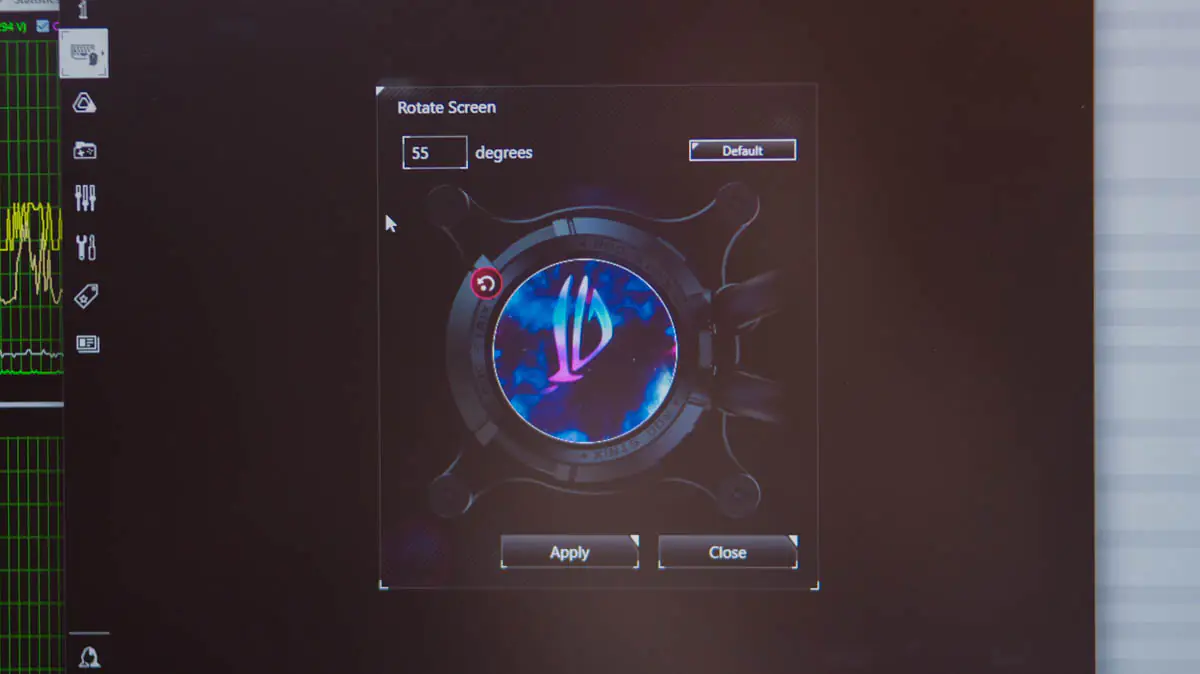
Additionally, after updating the firmware and software components for synchronization, you can do quite a bit with the screen. Specifically, you can animate the display using GIF files, and it can show the time, CPU temperature, voltage, or fan speed of any recognized fan in the system.
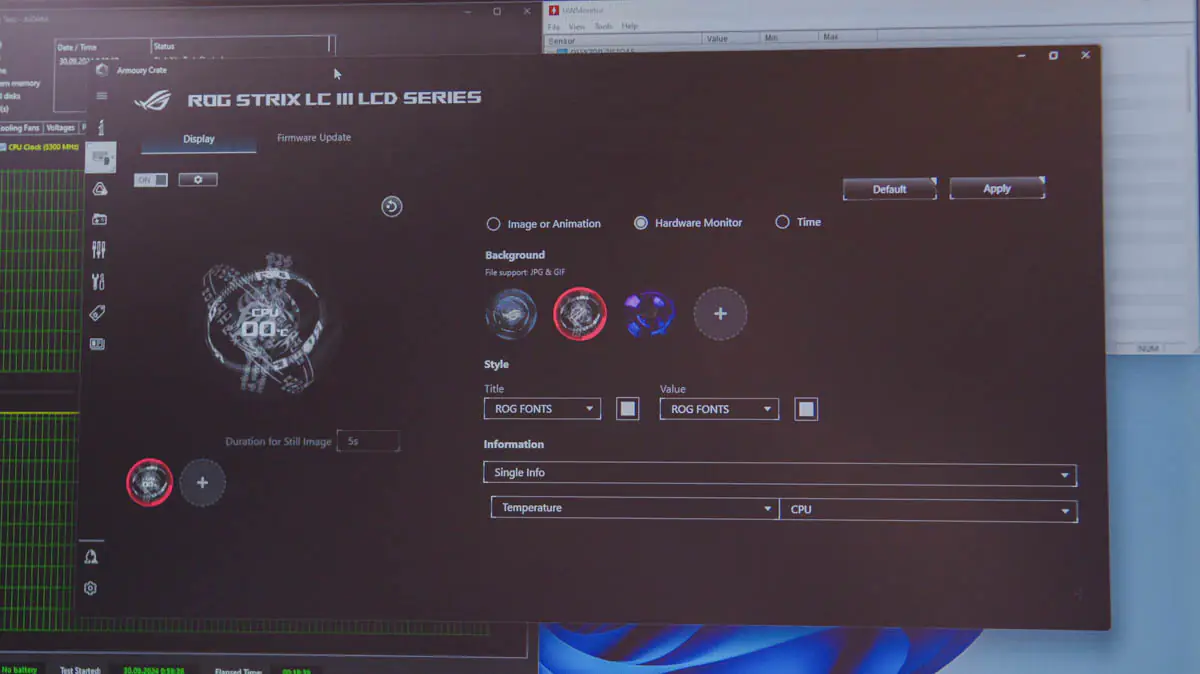
The most interesting optional feature I noticed is that even when the computer is turned off, as long as it’s receiving power, the current time is displayed on the pump. You can adjust the screen brightness or turn it off completely. The fans also have lighting—though they lack displays, they feature full, even ARGB lighting.
Test bench
The review of the ASUS ROG Strix LC III 360 ARGB LCD will be the last on my current test bench, the Gorilla Custom X. First, testing the AMD Ryzen 5 7600, even under artificial overclocking up to 100W power consumption, isn’t very representative. Secondly, the replacement will be the noticeably hotter Intel Core i5-13600K. I’m reconfiguring the AM5 test bench for a computer dedicated to S.T.A.L.K.E.R. 2—stay tuned!
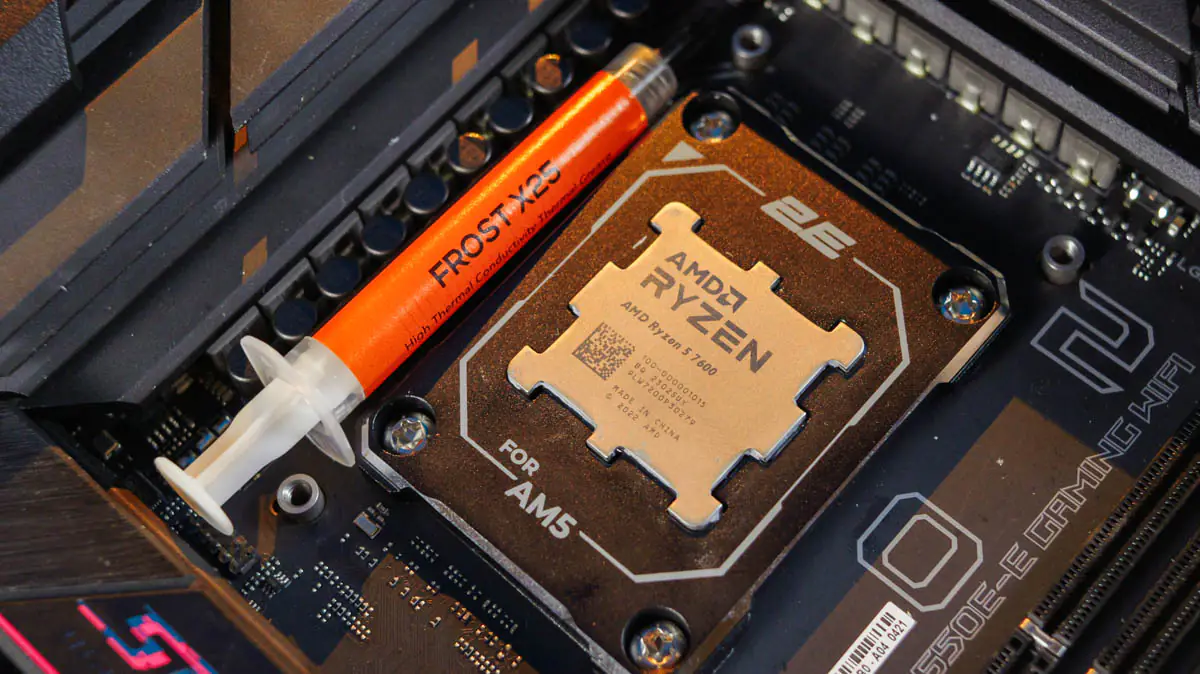
In the meantime, the stand is being assembled:
- AMD Ryzen 5 7600 with 2E SCBP-AM5 mounting bracket. Thermal Hero Gamma thermal pad with phase transition is used as thermal paste
- Motherboard – ASUS ROG Strix B650E-E Gaming Wi-Fi
- RAM – G.Skill Trident Z5 DDR5 6000 MTS 2×16 GBG
- Drives – Transcend MTE220S 2TB and Kingston NV3 2TB
- Power supply – be quiet! Silent Base 12 1200W
- The case is Gorilla Custom X, open type.
The background temperature was 23 °C. The processor was overclocked via Ryzen Master to 5300 MHz across all 6 cores with a voltage of 1.35 V. The stress test was conducted in AIDA64, applying load for 30 minutes on all CPU components except for the iGPU. By the way, we also have a review of the latter.
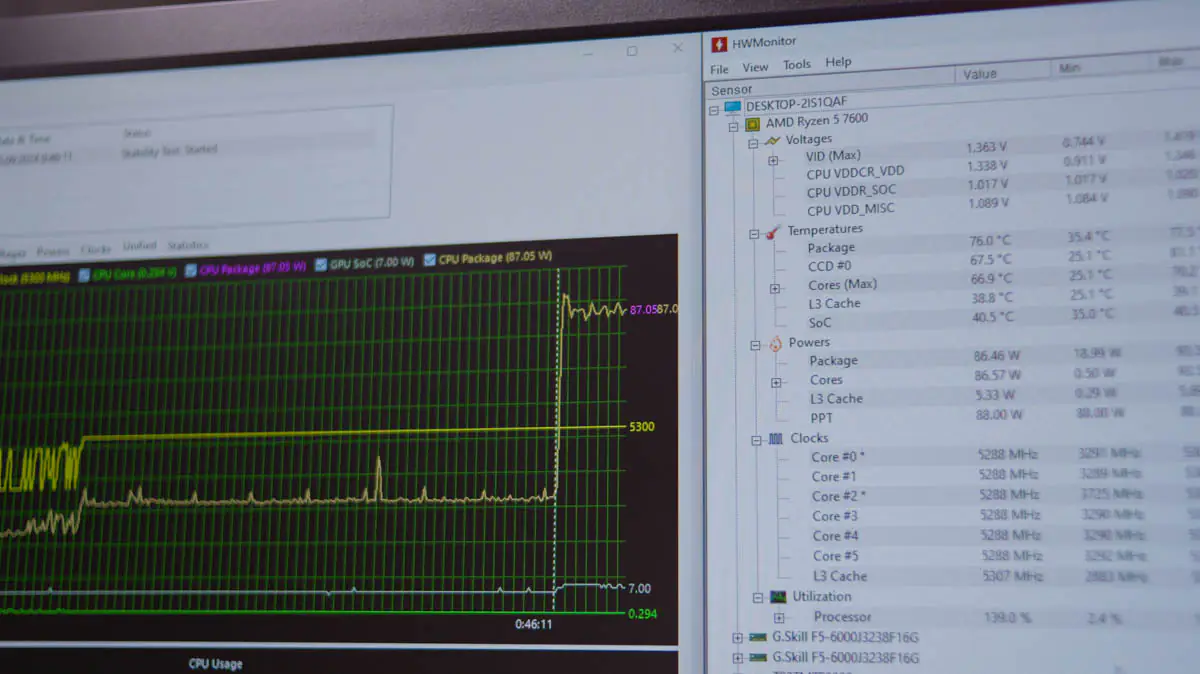
During the initial stress test, the processor temperature registered through the internal diode spiked to 105 degrees (which is normal). However, after increasing the pump speed to 3000 RPM and all three fans to 2200 RPM, the temperatures stabilized at around 90 degrees inside the CCD and 81 degrees on the external diode, as indicated by the standard display on the pump.
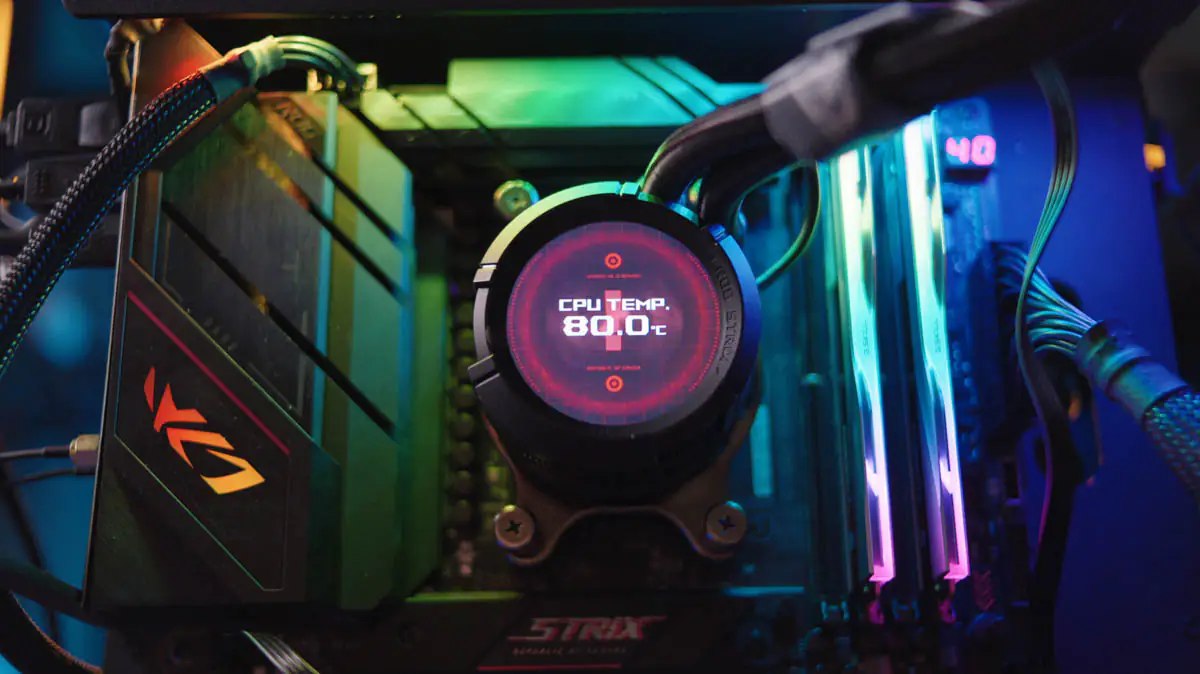
The power consumption was nearly stable at 100 W, while the Ryzen 5 7600 maintained its clock speed at 5300 MHz without any frequency drops. The fixation at 1.35 V is not representative, as the heating is excessive, but I was still able to squeeze the maximum performance out of the processor.

Other reviewers have also noted that the ROG Strix LC III 360 ARGB LCD effectively cools both the Ryzen 9 and Core i9 processors, even under overclocking and with some headroom to spare. Therefore, it is well-suited for any Ryzen 9000 series processor, even with Precision Boost Overdrive (PBO) enabled.

Regarding the noise levels, at 2200 RPM, the fans were audible but not annoying. At maximum speed, they produced a pleasant hum rather than a buzzing sound. The pump, on the other hand, was silent—at least in comparison to the fans. So even at full speed, it remains remarkably quiet.
Conclusions
This isn’t the best liquid cooling system from ASUS, as the company also offers the Ryujin series. However, it is undoubtedly the most visually appealing. To give you an idea, the price of the ROG Strix LC III 360 ARGB LCD is significantly closer to that of the flagship model than to its predecessor without a display. Is it worth paying extra for the display? If you’re part of the target audience and your budget allows it, then absolutely yes. ASUS has created a functional display that looks great both in person and on camera, and all the other advantages of the Strix LC III 360 ARGB have only improved. This includes the pump as well.
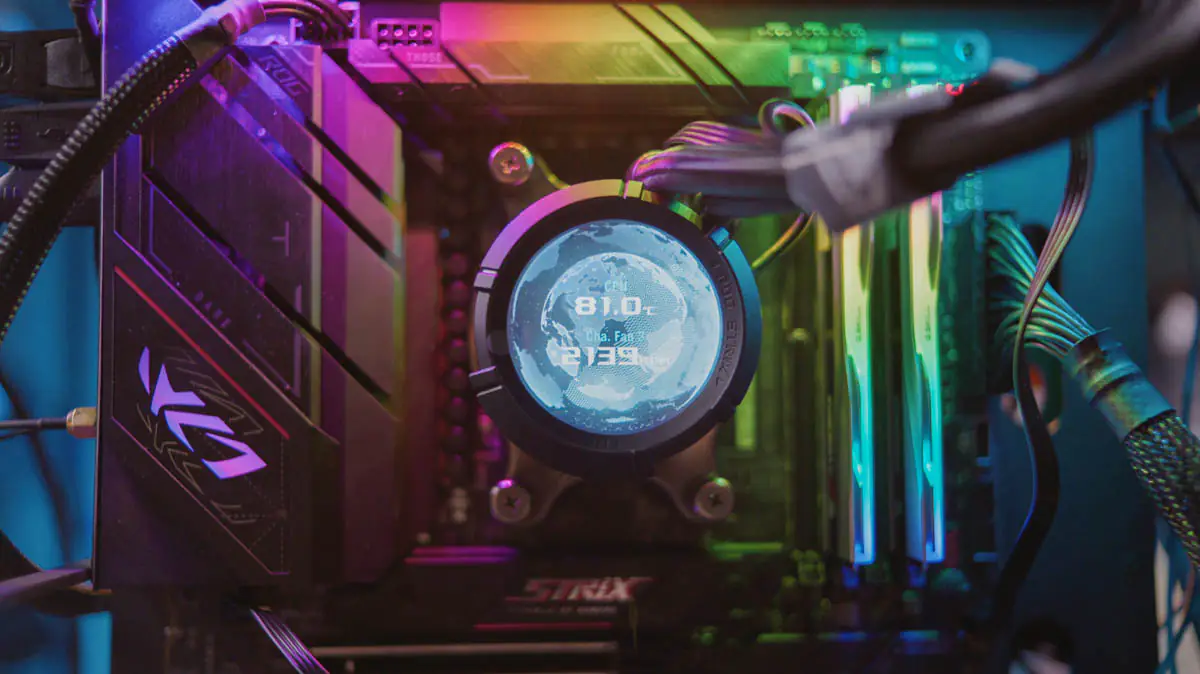
Do I have any complaints about the ROG Strix LC III 360 ARGB LCD? Aside from the price—none at all. And even the price is justified more than sufficiently. Therefore, you have my recommendation!
Read also:
- ASUS ROG STRIX GeForce RTX 4070 Ti SUPER OC 16GB Video Card Review
- ASUS ROG STRIX Z790-E GAMING WIFI II Motherboard Review: In Pursuit of Perfection
- ASUS TUF GAMING LC II 360 ARGB Water Cooling Review



